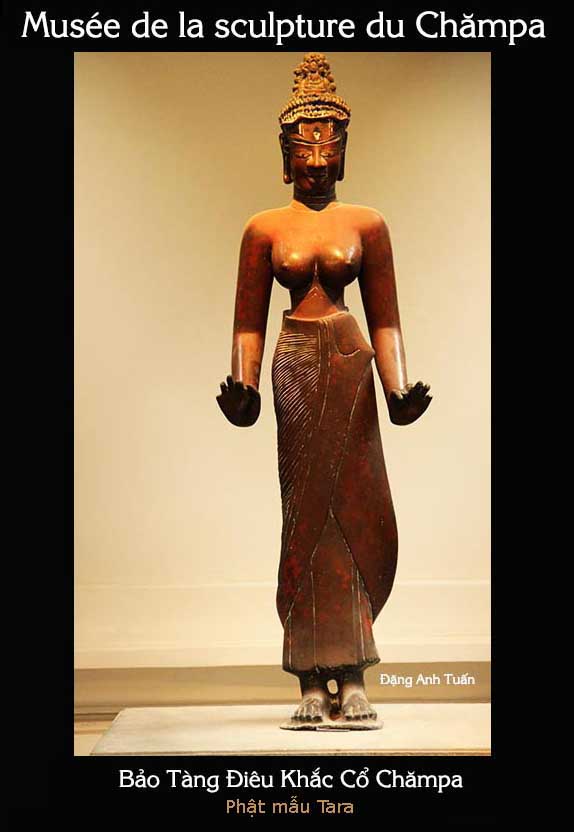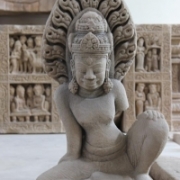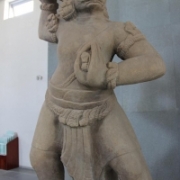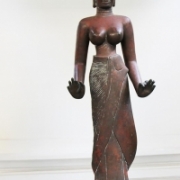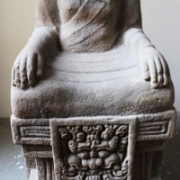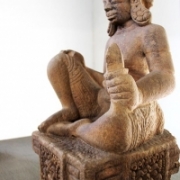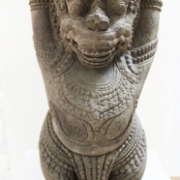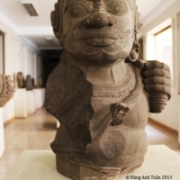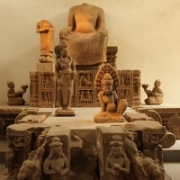Before it became the Champa Sculpture Museum today, it was known as the Sculpture Garden in the distant past. It was here that they began to collect and preserve for the most part, under the aegis of archaeologist-architect Henri Parmentier and members of the French School of the Far East (EFEO) in the late 19th century all the artifacts found during archaeological excavations in the central regions (from the Hoành Sơn Anamitic Range, Quãng Bình in the north to Bình Thuận (Phan Thiết) in the south) where an ancient Indochinese kingdom existed known in the early 2nd century as Linyi and then Huanwang and finally Champa until its annexation by Vietnam in 1471. Opened to the public in 1919, this museum initially took the name of its founder « Henri Parmentier Museum » and housed 190 artifacts among which was the famous pedestal of the Buddhist site Đồng Dương. Then the museum did not cease to expand since 1975 to reach today an area of 2,000 m² out of a total of more than 6,600 m² and to acquire in the year 1978 the great masterpiece of bronze art, the statue of Laksmindra-Lokesvara (Quan Âm chuẩn đề) often known as Tara. It becomes over the decades the unique museum in the world in the field of Champa art. It allows the tourist to also know the chronology of Champa history as all styles are present through artifacts from the famous sites Mỹ Sơn, Đồng Dương, Trà Kiệu and Pô Nagar (Nha Trang). For French researcher Jean Boisselier, Chame sculpture is always closely linked to history. Despite the evolution of styles throughout its history, chame sculpture continues to keep the same divine and animal creatures in a constant theme. This is a museum not to be missed if one has the opportunity to visit Đà Nẵng
- Mỹ Sơn E1 style (Phong cách E1)
- Chính Lộ style (Phong cách Chính Lộ )
- Đồng Dương style (Phong cách Đồng Dương)
- Tháp Mắm style … (Phong cách Tháp Mắm)
Tháp Mắm style
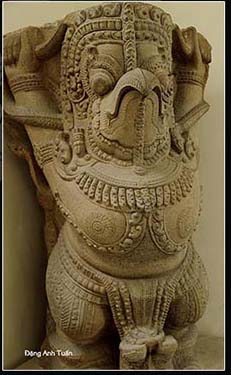
- Mỹ Sơn E1 style : vivacity in ornamentation, dedicacy in the details..
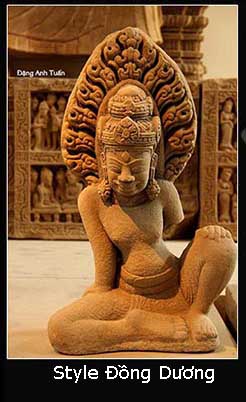
- Khương Mỹ style : gentleness in the faces, harmony and symmetry…
- Trà kiệu style : beauty in the adornments, the half-smile, the development of feminine beauty ( fully developed breasts, new freedom in the hips etc ..)
- Đồng Dương style :typical facial appearance (protruding eyebrowns, thick lips with the corners…
- Tháp Mắm style : art reached in its limits with a lack of realism and extravagance….
no images were found
© Đặng Anh Tuấn
